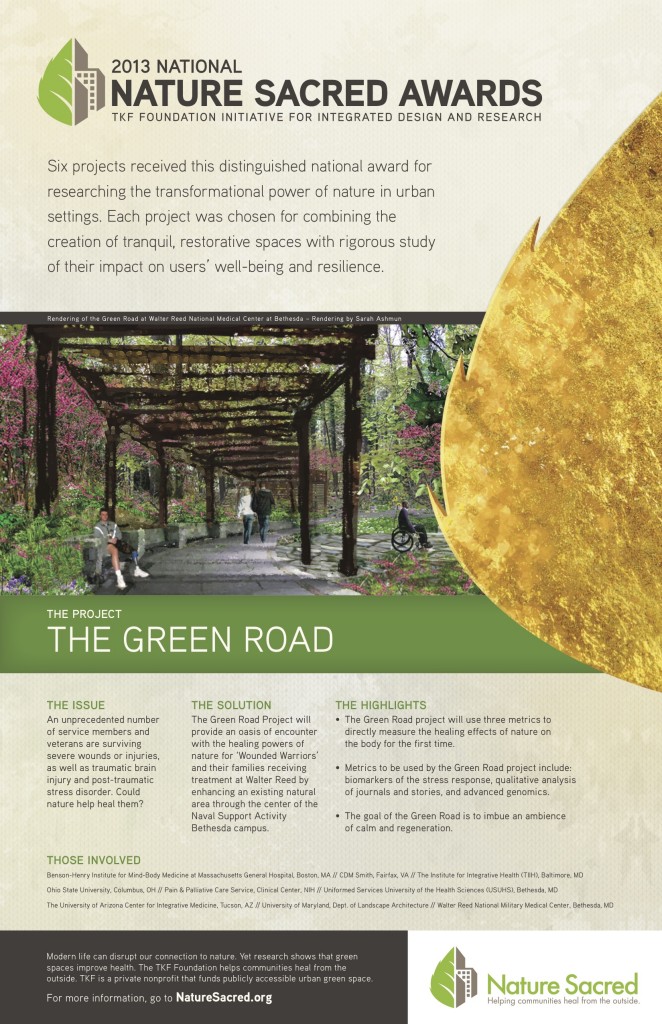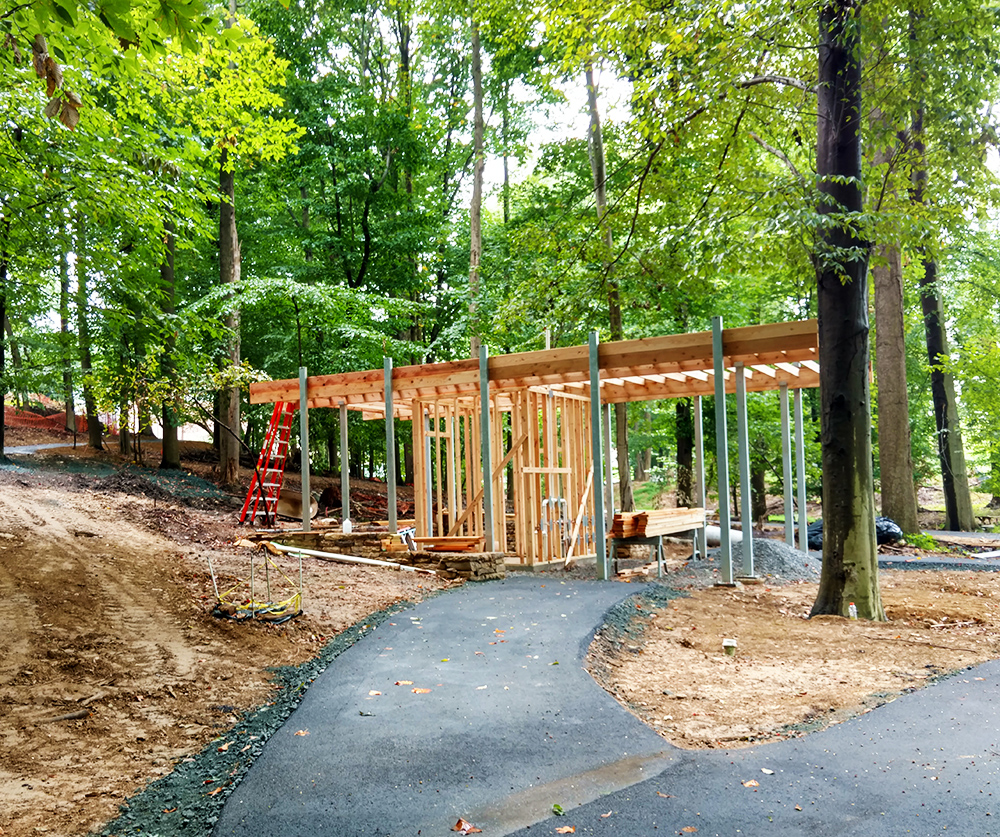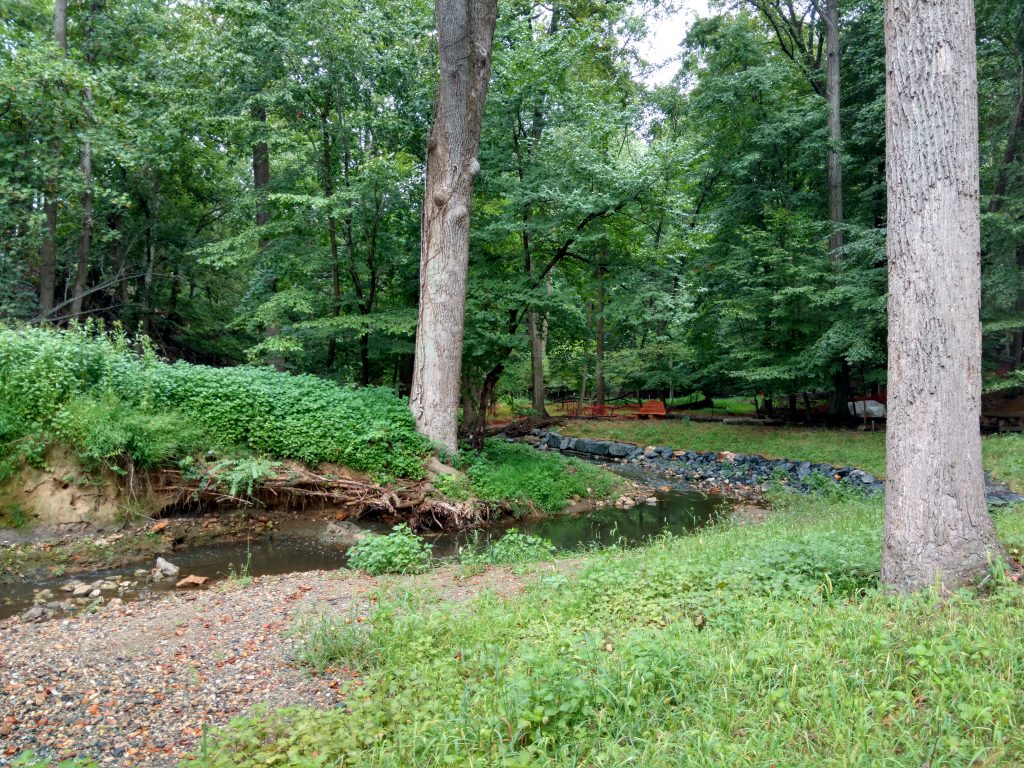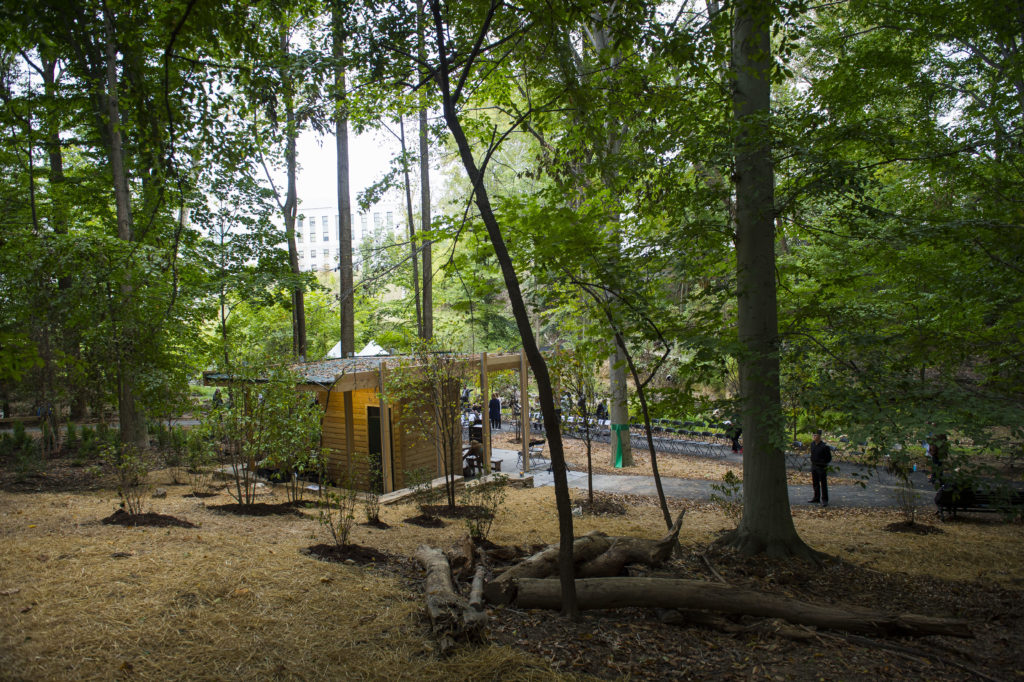The grocery store, your city buildings, the trees lining the main street in your neighborhood, the leaves in your driveway. The role of these everyday physical spaces and places are often taken for granted. Yet, by now we’ve established that an environment can support health and healing, or hinder it. The most straightforward example, of course, could be the hospital. For hundreds of years humans have built and cultivated complex environments intended to support healing. The design of healing spaces has changed throughout history, often according to values, beliefs, scientific knowledge, and technology.
Early temples dedicated to the Greek god of healing, Asclepius, were built in pastoral settings with mineral springs, bathing pools, gymnasiums, and healing gardens.
Dedicated temples can be seen today in the Greek countryside of the once city-state of Epidaurus. This World Heritage Site dates from the 4th century BCE and is a remarkable example of design devoted to healing. Here people would come to worship, lodge, recreate, and heal. The use of a garden or hot springs as a healing place is also evident in other early Asian and Roman cultures.
“The trees formed the first temples of the gods, and even at the present day, the country people, preserving in all their simplicity their ancient rites, consecrate the finest among their trees to some divinity; indeed, we feel ourselves inspired to adoration, not less by the sacred groves and their very stillness, than by the statues of the gods, resplendent as they are with gold and ivory….”
—translation of the Latin, from Pliny the Elder.
Two thousand years later, a modern application and interpretation of the links between human health and the life world around us is exemplified in a nature-based healing project opening soon on the campus of Naval Support Activity Bethesda, home of Walter Reed National Military Medical Center.

The Green Road will provide a two-acre natural healing environment for injured service members; providing wheelchair and foot transit through campus, a venue for engagement with art and nature, and a platform for evidence-based holistic healthcare design for the military and the nation at large. Service members and their families will have access to this space for self-directed or group activities. Program partners such as the Walter Reed Arts Program, the Veterans’ Integrative Arts in Healthcare Alliance, ArtStream and the Smithsonian also hint at future art and nature activities to enhance community engagement and healing.
Opening September 26th, The Green Road is a path towards patient-centered healing and a medical model for the future of healing environments.
The project, led by the captivating Dr. Fred Foote (CAPT, MC, USN, Ret.) is the capstone of a decades long project to develop a holistic approach to healing for service members and their families. In the early 2000s, Dr. Foote knew he had to help others see that “pills and surgery don’t work to heal our wounded suffering from PTSD and traumatic brain injury”. His research and expertise convinced him that “conventional medicine treats one organ at a time and the benefits of holistic care got lost in the past.” He believes the idea and science of holistic care will improve outcomes and care throughout the Military Health System and the U.S. population.
“The design of The Green Road is unique for several reasons. It is supported by the military and civilians and the design and research goals are integrated. It is an effort to heal with nature, not with programming. There is no one sanctioned method such as psychotherapy or cognitive therapy. We wanted to bring the soldier together with wild nature. That in itself is healing. It might not work, but that is why we are researching. We want to emphasize bringing soliders into a space where once can sit, stay still and experience elements like water, stone, trees and animals. The trees are the real structures in this space. We have some built structures with a roof and beams, but what is important is the trees. There are no programmed rituals, no set plans for therapists to sit with patients. It is a place just for the natural elements with as much human artifacts as possible deliberately removed.”
– Green Road Team Member Fred Foote
The Green Road grew out of the “Epidaurus Project“, a collaboration among prominent researchers, designers, military leaders and community members. The healing space promotes choice of nature-based experiences, moments of respite, and noninterference with the natural landscape. It is a “natural garden” area featuring a glade, a lightly wooded area, and a mature woodland extending up an adjacent hillside. A wheelchair accessible path, with a few well-placed benches will cross a flood plain to link these destinations, the Bethesda campus, and patient-family housing areas.The two acre area has been minimally developed to provide different experiences. The glade includes a sunny garden area beside a stream, suitable for quiet socializing and small ceremonies. A minimally-constructed structure will provide a gathering place and bathroom facilities. A lightly wooded area offers opportunities to listen and view the flowing stream, birdsong, and perhaps a moment with a resident deer or turtle. Naturally fallen trees and additionally planted flowers and berry-producing plants along the path provide food and shelter for wildlife, and beauty for the passer-by. A path leads up from the wooded area to a commemorative space at the very top of the hill where one can view the surroundings and turn inward. There will be opportunity to leave notes and prayers in the iconic TKF bench journal.

“You have to be there to experience it. When the deer are seen, when you hear the water! Everything that was added has a design to compliment the wild setting. What has been designed and added feels like it should be there. We do have a bathroom and setting but the architect made it feel like everything is integrated. We have invested our resources into bringing in more money and future programs into the space. We have added a large amount of money to the TKF grant for ongoing support. The TKF legacy will continue in a larger way.”
– Green Road Team Member Wendy Bhodel
Holistic, patient-centered care.
Fred Foote has spent over fifteen years working to bring the principles of holistic, person-centered care to the Military Health System through an initiative called the Epidaurus Project. The Epidaurus Project brought prominent physicians and researchers together to advance holistic care via the built environment. What is meant by holistic, person-centered care and the built environment? It is an approach to health and wellness concerned with the broad, interrelated network of factors that influence health of the whole person. It goes beyond defining health as an absence of disease and the current practice of dividing the body into manageable parts (the “organ-system” approach). Patient and caregivers may work together to develop a personal wellness program acknowledging the roles of nutrition and exercise, spirituality and family engagement, access to nature and the arts, and engagement with a purposeful healing environment. The efforts of the first phase of the Epidaurus Project have resulted in new “healing” infrastructure on the Bethesda campus, the National Intrepid Center of Excellence, and served to move the project to a new phase of research (“Epidaurus 2”).
“I joined The Institute for Integrative Health a few years ago as chief operating officer and am charged with championing integrative health. My background is in education, nonprofits and the arts. Everything I’ve done has been similar to integrative health before I knew what that was. When you can address someone’s emotional health and spiritual needs, you can change a person. I’ve seen amazing miracles with children who experienced extreme stress and extreme trauma, really similar in regards to PTSD in veterans. I’ve witnessed healing because of art and nature experiences. I’m a musician as well. Using the suzuki method, I’ve learned that a large part of who we are is influenced by the environment. I have seen how people can be healed through art and nature. I’m thankful to Dr. Foote bringing this to the forefront. This project resonates with me deeply.”
– Green Road Team Member Wendy Bohdel
How can the outcomes of holistic care be measured?
In pursuit of new answers to this process, an experienced team collaborated on a novel set of metrics, some of which will be used to measure the Green Road’s healing effects. This team includes The Institute of Integrative Health, Uniformed Health Services University, University of Arizona, National Institute of Health, and a VIP list of research institutions and professionals (see Foote et. al 2012). With support from the TKF Foundation, design teams from CDM Smith, Alt Architecture, Dirtworks, Inc. and Jack Sullivan collaborated to bring The Green Road to the Bethesda campus.
When the Green Road opens late September 2016, a plan is in place to assess the effects of time spent in the Green Road on recovery of service members, families and caregivers. In addition to standard metrics routinely used in similar studies, the Green Road project will utilize three metrics developed out of the Epidaurus 2 project: combined biomarkers of the stress response; qualitative analysis of journals and stories using natural language processing; and advanced genomics. Standard metrics to assess the effects of time spent in the Green Road on recovery of service members and families include an overall health assessment (SF-36), lifestyle choices questionnaire, the role of religion and spirituality, the presence of family and other life contexts, and rate of return to military duty. Research teams will compare improvements in the measures to time spent in the Green road, hoping to establish a dose-response for the healing effects of nature.
Beyond these routine metrics, research team members are encouraged by the potential for five “Epidaurus 2” metrics which appear to express the transition of the whole body from an illness to a wellness state. These are not yet available as a battery in other studies. Three of these metrics (combined biomarkers of the stress response; natural language processing (NLP) of patient and family journal entries and stories; and genomic markers of illness/wellness) will be combined to create a whole snapshot of each participant in the Green Road research project. Stress response biomarkers include heart rate variability, salivary cortisol (a stress hormone), and neuroimmune biomarkers. These are combined into a single expression to give a broader understanding of the human body’s response to constant, chronic stress. Although some of these stress response biomarkers are implemented in other nature-based health studies, none have implemented a full set at once. The second metric is a whole-genome transcriptional analysis to identify changes in individuals participants’ gene expression when engaged in therapies such as meditation practice. Recent research suggests behavior and environment alter the likelihood for a particular gene to “turn-on or off”.
The third holistic metric, Natural Language Processing, is a computer-based analysis of syntax and content within texts such as journal entries and art pieces. This type of analysis is already widely used in the technology sector to determine emotions and behaviors of a set of consumers or users. For example, in Spring 2017 a one day art retreat for Bethesda campus nurses will take place in The Green Road. The ArtStream program will invite ~100 nurses into the nature space, provide water color materials and a personal journal. For several hours the nurses will paint and write their thoughts in the personal journal. The art will be displayed on campus and the text may be used for analysis. An art activity like this within a nature space is powerful for healing and personal resilience.

The complexity of detail in the human body continues to astound. An interview from several years ago with a Green Road team member brings to mind the complexity of metrics needed to capture a whole view of human health:
“Traditional Chinese medicine looks at the relationship between the macrocosm of the universe (sometimes called the heavens) and the microcosm of mankind. With the Green Road Project, we’re looking at a similar paradigm: the relationship between the macrocosm of nature and the microcosm of human beings—specifically, the effects of nature on human health… We’re hopeful the Green Road Project’s research will shed light on this process.”
– Green Road Team Member Dr. Brian Berman

